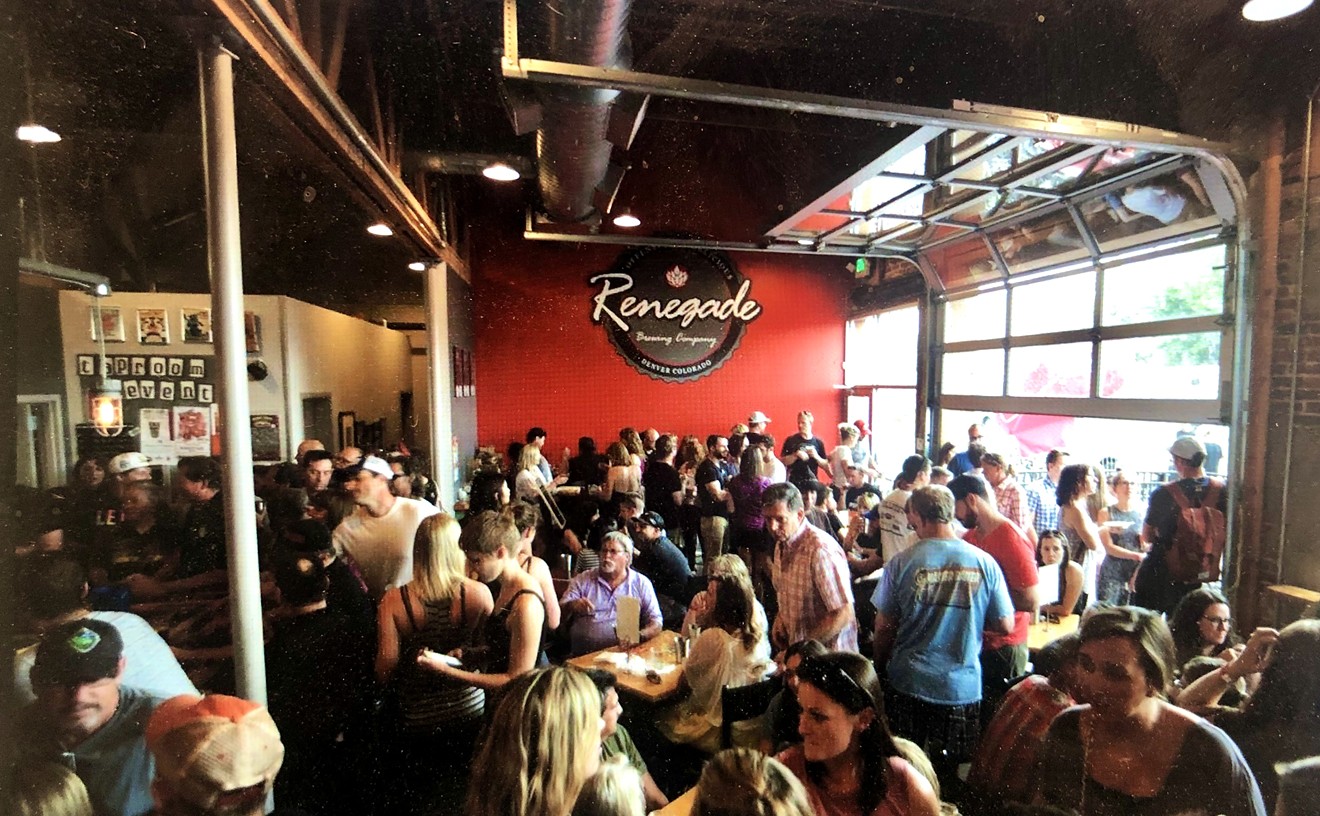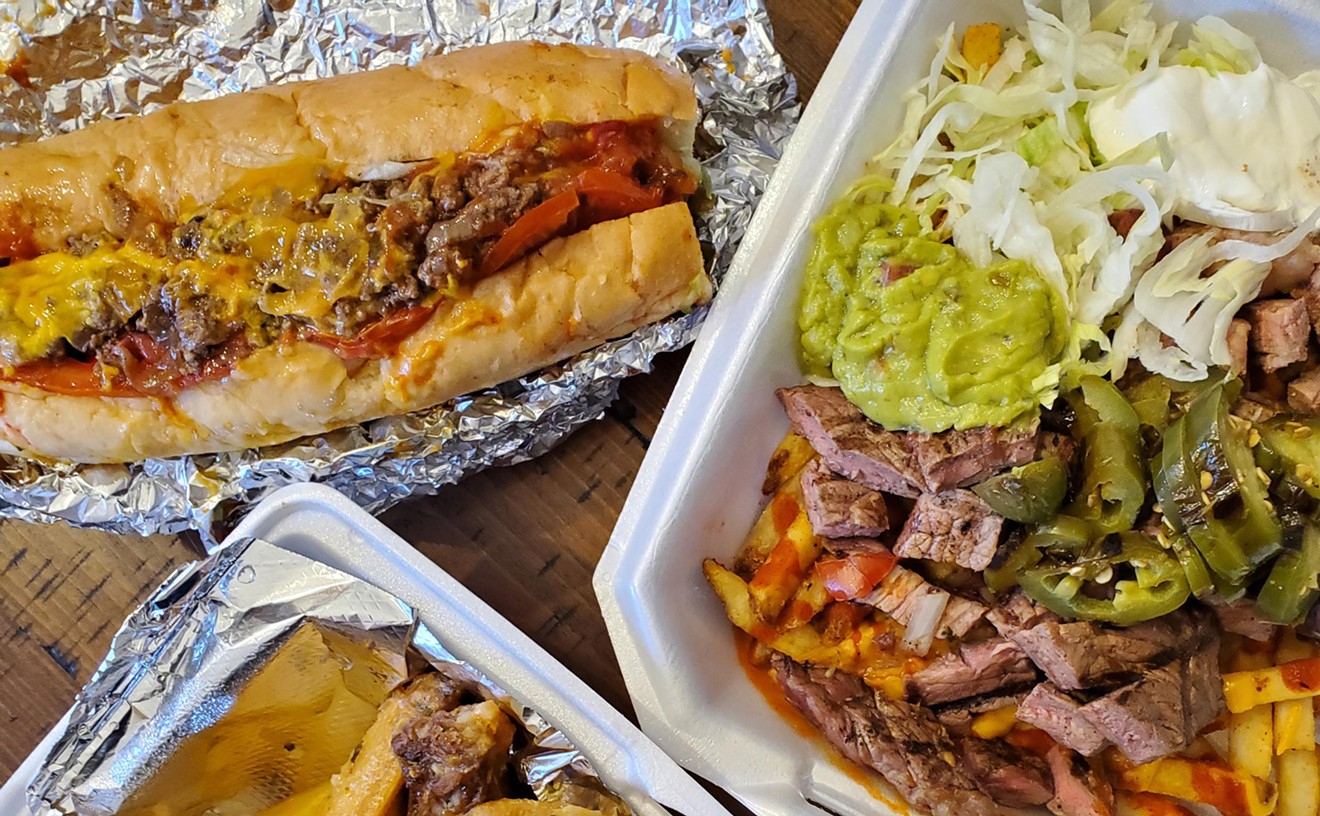When Chris Marchio peers into a glass of IPA, he doesn’t want to be able to see out the other side. Instead, Marchio, the head brewer for Fiction Beer Company, wants to see a haze, like a thick fog rolling off the Atlantic Ocean onto Cape Cod. He’s not alone in this desire, but he’s certainly in the minority when it comes to beer drinkers and beer makers in Colorado.
“To me, that looks pretty,” he says, looking at a glass of his latest creation, a double IPA called Cosmic Unity, which went on tap for the first time in early February. “I don’t need to see straight through the glass.”
Fiction is one of just a few breweries in Colorado — Odd 13 in Lafayette and Cerebral in Denver are two others — making so-called New England-style IPAs and double IPAs, a loose descriptor typically applied to examples of the style that are purposely hazy or cloudy, which can give them a slightly different mouthfeel. New England-style IPAs are also more reliant on hops that impart a tropical, juicy sweetness rather than the classic bitter, dank or citrus-y flavors characteristic of West Coast IPAs.
And while tropical hops flavors are nothing new for Colorado breweries, the cloudy, or turbid, look of these beers will definitely take some getting used to — especially for brewers who work hard to make crystal-clear IPAs and drinkers who aren’t used to the fog.
The subject has inspired several vigorous debates on Facebook, in groups like Colorado Let’s Talk Craft Beer and on the pages of individual brewers. Dry Dock head brewer Alan Simons, who has participated in some of these, says that for the most part, if he sees a haze, it means the beer isn’t ready to serve. “I am not against haze,” he explains. “I just feel like the trend of unfiltered haze has morphed into some breweries not giving beers enough time. I don’t want to suggest that everyone is doing that, but I don’t want to see a bad practice become a methodology.”
After all, while beers are mostly judged by flavor and aroma, to a lesser extent they are also evaluated for color and clarity. In fact, many are praised for being nearly see-through — so clear that you could look into a glass filled with beer and still read a newspaper behind it.
If a beer — even unfiltered beer — is hazy, it can sometimes mean that it has some sort of defect, or that a mistake was made in the brewing process. Maybe the brewer used a yeast strain that didn’t allow the yeast particles to drop out of the beer as they should have, and now they’re floating in your glass. Or maybe the brewer cooled the beer too quickly or dry-hopped it too much.
The defect might not affect the taste — but then again, it might. (One exception to this standard is hefeweizens, which are supposed to be hazy.) Some large breweries have spent a lot of money on centrifuges in order to eliminate yeasty turbidity; most smaller ones spend less money and more time on “fining” agents like Biofine, which eliminate particles and haze in beer.
The Brewers Association, which has become concerned with quality as new breweries open across the country, last year published a treatise titled “Beer Haze: Clarity in a Topsy-Turbid World” that broke down the various reasons for and dangers of hazy beer. “Remember to take clarity and other visual clues as just that: clues, but not the whole truth,” it concluded. “Make sure to pay attention to the beer as a complete package. Every beer fan decides for themselves what is acceptable and what is not. Understanding why your beer is cloudy will not only help you evaluate beer better, but to evaluate beer like a brewer.”
Simons uses a centrifuge at Dry Dock, but the beers at his previous workplace, Backcountry Brewery in Frisco, were unfiltered, and he worked hard to make sure they were clear. Yeasty beers, he says, “can result in off-flavors, like a green-apple taste...or muddle the good hop flavors with astringency.”
But breweries that champion hazy IPAs say that the beers have an aesthetic and a mouthfeel that they like, as well as a powerful hops burst. New England breweries making such beers include Trillium Brewing in Massachusetts and three in Vermont: Lawson’s Finest Liquids, Hill Farmstead Brewery, and the Alchemist, which makes Heady Topper, rated as one of the best double IPAs in the nation.
“I don’t consider hazy a fault. Personally, I’m trying to make it as hazy as possible,” says Marchio, who grew up in Massachusetts and lived in Vermont for eight years. To make New England-style IPAs, breweries use English ale yeast because it doesn’t flocculate — i.e., clump together — as well as American ale yeast. As a result, the yeast can stay suspended in the liquid rather than dropping out. Also, English ale yeast doesn’t eat as much sugar as American ale yeast; the unfermented sugar then binds to the oils and resins in the hops, which can also cause cloudiness.
“We don’t want it to be so hazy that it is clearly full of yeast,” Marchio says. “But we do want to create that haziness. There’s a difference between a chunky beer and a hazy one.”
Cerebral Brewing co-owner Sean Buchan says his goal is to pull out “the freshest, juiciest flavor we can get” from his beers, noting that “a lot of times, that results in haze.” He could use Biofine, but he doesn’t want to: “I think it detracts from the flavor. Maybe it’s just the visual effect, but haze makes it look juicy.”
Buchan believes there’s a misconception that hazy beers mean you are “holding a glassful of yeast in your hand,” he says. But his beers, which include two IPAs, Rare Trait and Strange Claw, get their haze from dry-hopping, something his business partner, microbiologist Chris Washenberger, has confirmed under a microscope.
The New England breweries that started the trend are trying something new, Buchan adds: “Brewing is an art, and it’s one where you get to do things differently if you want.”
Brian Hutchinson, co-owner of Cannonball Creek Brewing in Golden, says New England-style IPAs are such a specialty to that region that he hasn’t had a chance to try many of them. And while he acknowledges the possibility that Biofine might take away a small amount of aroma or flavor, he thinks it’s worth it for the “overall presentation and mouthfeel.”
The Colorado brewery that may have enjoyed the most success with hazy beers is Odd 13 in Lafayette, which cans an IPA called Superfan that has received a lot of attention. “For a while, our flagship beer had been Eric the Red, a West Coast-style clear IPA,” says co-founder Ryan Scott. “We do a lot of hoppy stuff, and this is kind of the next avenue in terms of what people are doing that is interesting with hops.... It became our bestseller within a month.”
The key difference is the flavor. “We are aiming for a thicker, chewier mouthfeel compared to bone-dry IPAs we produced in the past,” Scott explains. “We wanted to keep the hops flavor and aroma high while keeping the bitterness as low as possible. People say they are reminded of fruit juice because of the hops character and because of the higher body and creamier mouthfeel.”
Brewed with Simcoe, Equinox, Citra and Amarillo hops, Superfan is also made with wheat, which contributes to its hazy look. Odd 13, which just opened a new sixty-barrel production facility, also changed its process to keep more yeast in the solution. To help educate the public, Odd 13 communicated with the beer buyers and stores where it sells its beer and explained what the brewery was trying to do.
“The geekier stores, especially, are really plugged into things, though, and aware of these types of beers, so they already understood,” Scott says. Odd 13 also made a second hazy IPA called n00b, which is currently available as well, but that one was just a limited release.
Scott believes that other Colorado breweries will soon begin making New England-style IPAs. “It’s the hot thing right now,” he says.
“It’s not for everybody. It’s not for everybody’s taste,” he admits. “A lot of people prefer the bigger, dry, more bitter kind of IPA. But we like to play with hops in a lot of different ways. This is one more way to do that, and it’s selling like crazy. We can’t make enough of it.”
[
{
"name": "Air - MediumRectangle - Inline Content - Mobile Display Size",
"component": "12017618",
"insertPoint": "2",
"requiredCountToDisplay": "2"
},{
"name": "Editor Picks",
"component": "17242653",
"insertPoint": "4",
"requiredCountToDisplay": "1"
},{
"name": "Inline Links",
"component": "18838239",
"insertPoint": "8th",
"startingPoint": 8,
"requiredCountToDisplay": "7",
"maxInsertions": 25
},{
"name": "Air - MediumRectangle - Combo - Inline Content",
"component": "17261320",
"insertPoint": "8th",
"startingPoint": 8,
"requiredCountToDisplay": "7",
"maxInsertions": 25
},{
"name": "Inline Links",
"component": "18838239",
"insertPoint": "8th",
"startingPoint": 12,
"requiredCountToDisplay": "11",
"maxInsertions": 25
},{
"name": "Air - Leaderboard Tower - Combo - Inline Content",
"component": "17261321",
"insertPoint": "8th",
"startingPoint": 12,
"requiredCountToDisplay": "11",
"maxInsertions": 25
}
]











